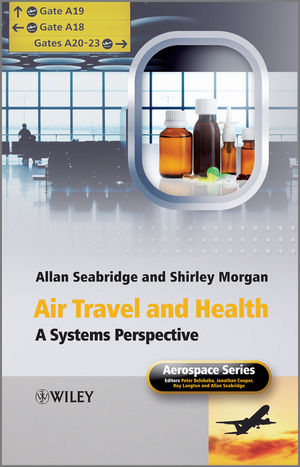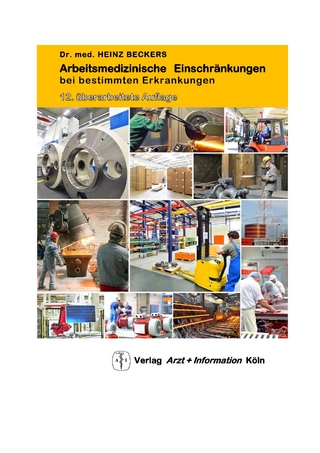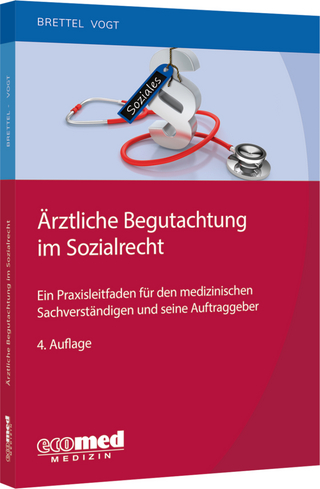
Air Travel and Health
John Wiley & Sons Inc (Verlag)
978-0-470-71177-4 (ISBN)
- Titel z.Zt. nicht lieferbar
- Versandkostenfrei innerhalb Deutschlands
- Auch auf Rechnung
- Verfügbarkeit in der Filiale vor Ort prüfen
- Artikel merken
Providing a detailed examination of the issues that affect the long term health of aircrew, cabin crew and passengers, Air Travel and Health offers guidance to engineers designing aircraft in the difficult field of legislation and product liability. Examining the facts, anecdotes and myths associated with health and travel, Seabridge and Morgan draw balanced conclusions on which the aircraft operations and design communities can act to provide cost-effective solutions. The authors present a useful reference for aircrew, regulatory authorities, engineers and managers within the aerospace industry, and medical and human factor specialists, as well as an informative resource for undergraduate and graduate students.
Allan Seabridge, Seabridge Systems Ltd, UK Allan Seabridge is recently retired as Head of Flight Systems Engineering with BAE Systems. He has 36 years experience in aerospace systems engineering, business development and research & development, with major projects worked on including Canberra, Jaguar, Tornado, EAP, Typhoon & Nimrod. Since retiring he has developed an interest in engineering education leading to the design and delivery of systems and engineering courses at a number of UK universities at undergraduate and postgraduate level. He also provides technical consultancy to companies in the aerospace industry. Allan's interest in the impact of flying on health was initiated by a study he conducted before retiring to ensure that the company had a proven track record in understanding the issues involved. Later tracking of the subject in the press revealed that many travellers claim to suffer from ill health after flying, and this engendered an interest in collating all the records of such claims and looking at the potential impact on aircraft design and of product liability. Shirley Morgan, UK Having spent 9 years at BAE Systems at Warton as internal communications manager, Shirley Morgan is a freelance journalist with a broad spread of regular clients for whom she writes and produces material from single articles to whole magazines. Her clients come from many sectors, from higher education to defence and pharmaceuticals, as well as not-for-profit organisations.
About the Authors xv
Preface xvii
Series Preface xix
Acknowledgements xxi
Acronyms and Abbreviations xxiii
1 Introduction 1
1.1 Factors Affecting Health 2
1.2 The System of Interest 2
1.2.1 The Operating Environment 2
1.2.2 The Atmosphere 3
1.2.3 The Aircraft Inhabitants 4
1.2.4 Sources of Environmental Stimuli 5
1.3 The Aircraft 6
1.3.1 Military Aircraft 6
1.3.2 Commercial Aircraft 8
1.4 Design Considerations 10
1.5 Summary 14
References 16
Further Reading 16
Useful Web Sites 16
2 Some ‘Minor’ Ailments 17
2.1 Introduction 17
2.1.1 Health Information 17
2.1.2 Considering the Whole Trip 18
2.1.3 Some Symptoms Reported by Travellers 18
2.1.4 Health Risks 19
2.2 Some Common Conditions of Air Travel 20
2.2.1 General Discomfort 20
2.2.2 Jet Lag (Circadian Dysrhythmia) 21
2.2.3 Fear of Flying (Aerophobia) 23
2.2.4 Discomfort of the Ears 23
References 25
Further Reading 25
Useful Web Sites 26
3 Air Quality 27
3.1 The Environment 28
3.1.1 The Atmosphere 28
3.1.2 Air Quality 28
3.1.3 Cabin Air Supply 29
3.1.4 Sources of Contamination 29
3.2 Aircraft Environments 31
3.2.1 Commercial Aircraft 31
3.2.2 Military Aircraft 33
3.3 Environmental Control Systems 36
3.3.1 Air Cooling 36
3.3.2 Air Distribution 36
3.4 Health Issues 40
3.4.1 Effects of Contamination 41
3.4.2 Aerotoxic Syndrome 41
3.4.3 At Risk on the Ground? 47
3.4.4 Spreading Illness 47
3.5 System Implications 48
3.5.1 Contaminants 48
3.5.2 Future Systems 51
3.6 Request for Further Information 55
References 56
Further Reading 57
Useful Web Sites 58
4 Deep Vein Thrombosis 59
4.1 Introduction 59
4.1.1 How Common Is It? 61
4.1.2 How Long Is a Long Flight? 62
4.2 The Environment 62
4.3 Aircraft Environments 63
4.3.1 Commercial Aircraft 63
4.3.2 Large Military Aircraft 64
4.3.3 Fast-Jet Military Aircraft 67
4.4 The System 67
4.4.1 Commercial Aircraft 67
4.4.2 Military Aircraft 68
4.5 Health Issues 69
4.5.1 Cabin Altitude and Pressure 70
4.5.2 SoWho Is at Risk? 71
4.5.3 Summary of Risks 72
4.6 System Implications 73
4.6.1 Litigation 73
4.6.2 Preventative Measures 74
4.6.3 Advice to Passengers 74
4.6.4 Continuing Work 76
References 77
Further Reading 78
Useful Web Sites 78
5 Noise and Vibration 79
5.1 The Environment 81
5.2 Aircraft Environment 82
5.2.1 Commercial Aircraft 82
5.2.2 Military Aircraft 83
5.3 Health Issues 85
5.3.1 Hearing 85
5.3.2 Vibration 85
5.4 System Implications 86
5.4.1 Limiting Flying Hours 86
5.4.2 Active Noise Cancellation 87
5.4.3 Microphone Disabling 87
5.4.4 Personal Noise Management 87
5.4.5 Risk Assessment 88
References 88
Further Reading 88
Useful Web Sites 88
6 Exposure to Radiation 89
6.1 The Environment 89
6.1.1 Cosmic Radiation 90
6.1.2 Radiation in Space 92
6.1.3 Non-ionising Radiation 92
6.2 The Aircraft Environment 93
6.2.1 Ionising Radiation from Space 93
6.2.2 Non-ionising RF Radiation 94
6.2.3 Understanding the Risk in Commercial Aircraft 97
6.2.4 Understanding the Risk in Military Aircraft 99
6.3 Aircraft Systems 100
6.4 Health Issues 101
6.4.1 Risk of Cancer 101
6.4.2 Risks to Female Crew Members 103
6.4.3 Risks to Passengers 103
6.4.4 Eye Damage 104
6.4.5 Damage to Life Support Equipment 104
6.5 System Implications 104
6.5.1 Legislation 104
6.5.2 Mitigating Action 108
6.6 Future Developments 109
References 110
Further Reading 112
Useful Web Sites 112
7 Back and Neck Pain 113
7.1 Back Pain 113
7.1.1 Lower Back Pain 113
7.1.2 Posture 114
7.1.3 Back Pain and Military Aircraft 114
7.1.4 Helicopter Pilots 115
7.1.5 Posture and Pain 117
7.2 Neck Strain 120
7.3 Commercial Aircraft Issues 122
7.3.1 Flight Attendants 122
7.3.2 Passengers 123
7.4 Lumbar Support 123
7.5 Advice for Passengers 125
References 126
Further Reading 127
8 Military Issues 129
8.1 The Cockpit Environment 130
8.2 Effects of Acceleration 133
8.3 Pressure Oxygen Breathing and Hypoxia 136
8.3.1 Hypoxia 136
8.3.2 Decompression Sickness 137
References 137
Further Reading 138
Useful Web Sites 138
9 Workstation Use 139
9.1 The Environment 140
9.2 Aircraft Environments 141
9.2.1 Commercial Aircraft 141
9.2.2 Military Aircraft 142
9.3 The System 143
9.4 Health Issues 146
9.4.1 Sight 146
9.4.2 Posture 147
9.4.3 Back and Neck Pain 147
9.4.4 Vibration 148
9.5 System Implications 148
Reference 150
Further Reading 150
Useful Web Sites 150
10 Regulation and Control of Risks to Health 151
10.1 General 151
10.2 Legislative Framework 152
10.2.1 Health and Safety 153
10.2.2 EU Legislation 154
10.2.3 Environmental Legislation 156
10.2.4 Air Navigation Order 157
10.2.5 Duty of Care 157
10.3 Summary of Legal Threats 157
10.3.1 Criminal Prosecution 157
10.3.2 Civil Lawsuits 158
10.3.3 Customer/Public Relations 158
10.4 Issues Arising 158
11 The Design Process 161
11.1 Control of Risk 161
11.1.1 Governance 161
11.1.2 Company Policy 162
11.1.3 Company Procedures 162
11.2 Design 162
11.2.1 Standards 162
11.2.2 Good Practice 163
11.2.3 Design and Qualification Process 163
11.3 Application 174
11.3.1 Incorporation 175
11.3.2 Operations 175
11.4 Feedback 175
11.4.1 Public Comment 176
11.4.2 Complaints 176
11.4.3 Litigation 176
Reference 177
12 Summary and Conclusions 179
12.1 Integration Effects 180
12.2 Predisposition 182
12.2.1 The Travel Experience 183
12.2.2 Genetic Factors 183
12.2.3 Public Health 183
12.3 Domestic Circumstances 183
12.3.1 Carrying and Lifting 184
12.3.2 Do-It-Yourself (DIY) 184
12.3.3 Noisy Pursuits 184
12.3.4 Lifestyle Factors 184
12.3.5 Water Sports 185
12.3.6 Obesity 185
12.4 Comparison with General Public Health Conditions 185
12.4.1 Sick Building Syndrome 185
12.4.2 Myalgic Encephalomyletis (ME) or Chronic Fatigue Syndrome (CFS) 186
12.4.3 WiFi Sensitivity 187
12.4.4 Electrical Power Line Sensitivity 188
12.4.5 New Car Syndrome 189
12.4.6 Household and Industrial Cleaning Products 190
12.4.7 Discussion 191
12.5 Serious Conditions 191
12.6 Advice to Industry 191
12.6.1 Processes and Procedures 192
12.6.2 Independent Medical Advice 193
12.6.3 Research 193
12.6.4 Seeing the ‘Big Picture’ 193
12.7 Advice to Operators 195
12.7.1 Promote Awareness 195
12.7.2 Independent Medical Advice 195
12.7.3 Research 195
12.8 Advice to Travellers 195
12.8.1 Obtain Medical Advice 196
12.8.2 Improve Awareness 196
12.9 What Can Be Done? 199
12.10 Finally 204
References 204
Further Reading 205
Useful Web Sites 205
Bibliography 207
Index 217
| Erscheint lt. Verlag | 18.10.2010 |
|---|---|
| Reihe/Serie | Aerospace Series (PEP) |
| Mitarbeit |
Herausgeber (Serie): Peter Belobaba, Jonathan Cooper, Roy Langton |
| Verlagsort | New York |
| Sprache | englisch |
| Maße | 159 x 236 mm |
| Gewicht | 513 g |
| Themenwelt | Medizin / Pharmazie ► Medizinische Fachgebiete ► Arbeits- / Sozial- / Umweltmedizin |
| Technik ► Fahrzeugbau / Schiffbau | |
| Technik ► Luft- / Raumfahrttechnik | |
| Technik ► Maschinenbau | |
| ISBN-10 | 0-470-71177-9 / 0470711779 |
| ISBN-13 | 978-0-470-71177-4 / 9780470711774 |
| Zustand | Neuware |
| Haben Sie eine Frage zum Produkt? |
aus dem Bereich


